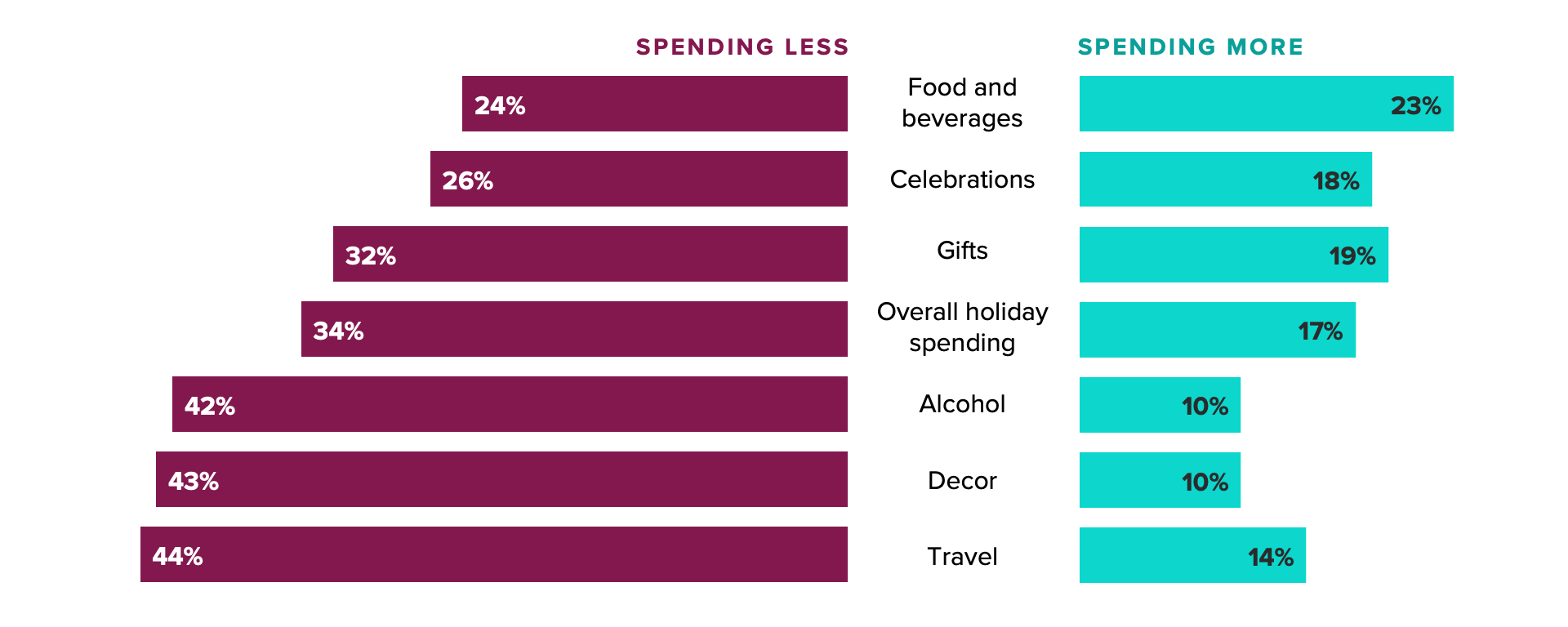Consumers Prioritize Holiday Gifts Amid Inflationary Pressures

This holiday season, shoppers are leaning away from doing all their shopping online, instead preferring to mix online and offline channels. Continued inflationary pressures mean consumers will be particularly alert to deals over the next few months as they try to maximize their budgets for gifts and celebrations.
Whether you’re enjoying the warm temperatures of late summer or you’ve moved on to pumpkin spice season, just know that 25% of consumers started their holiday shopping prior to the Labor Day weekend. This tracks with activity from years past, though we’re not seeing evidence that people are shopping earlier to get ahead of potential rising prices. Retailers’ current aggressive price promotions may indicate an “always-on” discount strategy through year-end, meaning the significance of Black Friday and Cyber Monday will continue to diminish.
So what does look different this year? Fewer shoppers say they’ll do most of their holiday shopping online. Diminished pandemic concerns and a desire to avoid shipping charges should support brick-and-mortar sales this year.
Holiday shoppers’ preferences for online shopping actually look more similar to those in pre-pandemic years. The real growth is in how many more shoppers plan to blend their shopping across physical and digital channels: In 2019, 33% said they tend to shop more online, while just 29% said they tend to split their shopping equally between stores and the internet. This is just further evidence that the pandemic was not the permanent shift toward online shopping that many predicted; rather, as people feel more comfortable with public life, they’ll head back to stores — but with more digital savvy than they had three years ago. As consumers increasingly blend their holiday shopping between online and offline spaces, retailers should coordinate promotional activity across channels, and be prepared to support online shoppers with local inventory via “buy online, pick up in store” services.
Overall holiday spending appears consistent with last year
Early September data shows that roughly half of U.S. shoppers anticipate spending the same amount across the 2022 holiday season as they did last year, both overall and on gifts specifically. Meanwhile, actual gift spending forecasts look very similar to September 2021. This means shoppers will be making trade-offs to afford inflated prices for holiday expenses.
Shoppers are least likely to reduce their spending on groceries, celebrations and gifts. But they will be cutting back on travel (e.g., staying with family instead of in a hotel), decor and alcohol.

Gift spending is a top priority, so consumers will find a way to fit it in their budgets. More than 3 in 5 (64%) respondents said they would be more conservative in spending leading up to the holidays, prioritizing value and deals in choosing where to shop this season. In addition, 82% said they’ll look for more deals and discounts this year, and 72% said they’d look for less expensive alternatives.
Yet, the share of adults who plan to shop on Black Friday this year (47%) is virtually identical to the share who said the same last year (49%). For retailers, that means getting discounts in front of consumers early and often. Shoppers will be more easily swayed by competitive prices this year — so reaching out to existing customers with personalized promotions can help retain loyal customers in an otherwise disrupted holiday season.